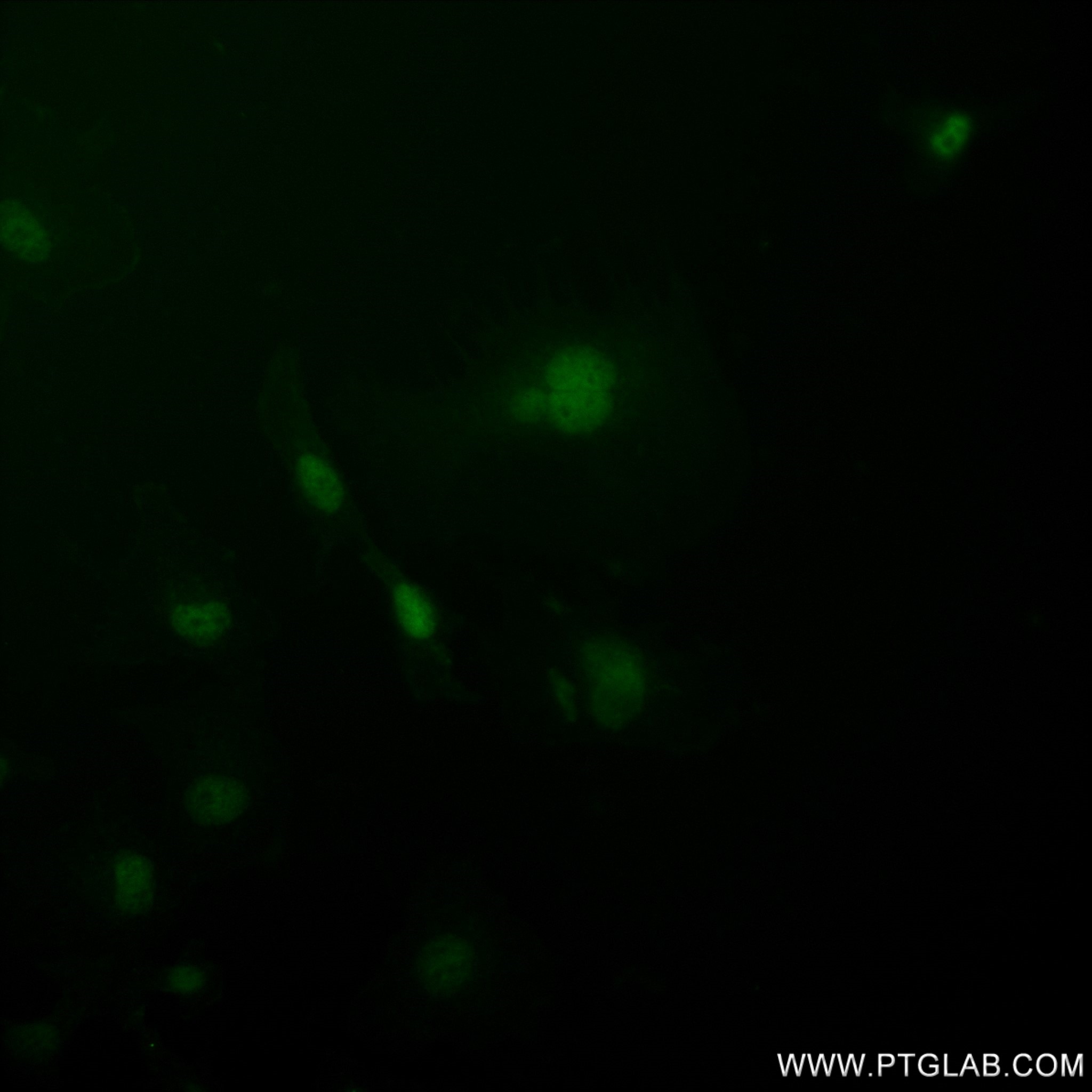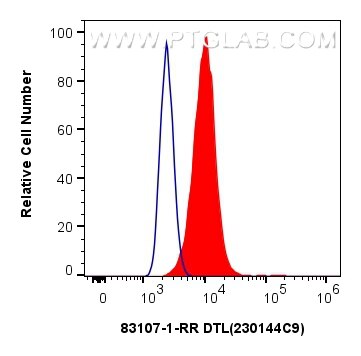Tested Applications
| Positive IF/ICC detected in | HeLa cells |
| Positive FC (Intra) detected in | HeLa cells |
Recommended dilution
| Application | Dilution |
|---|---|
| Immunofluorescence (IF)/ICC | IF/ICC : 1:200-1:800 |
| Flow Cytometry (FC) (INTRA) | FC (INTRA) : 0.25 ug per 10^6 cells in a 100 µl suspension |
| It is recommended that this reagent should be titrated in each testing system to obtain optimal results. | |
| Sample-dependent, Check data in validation data gallery. | |
Product Information
83107-1-RR targets DTL in IF/ICC, FC (Intra), ELISA applications and shows reactivity with human samples.
| Tested Reactivity | human |
| Host / Isotype | Rabbit / IgG |
| Class | Recombinant |
| Type | Antibody |
| Immunogen | DTL fusion protein Ag33391 Predict reactive species |
| Full Name | denticleless homolog (Drosophila) |
| Calculated Molecular Weight | 730 aa, 79 kDa |
| GenBank Accession Number | BC033540 |
| Gene Symbol | DTL |
| Gene ID (NCBI) | 51514 |
| RRID | AB_3670819 |
| Conjugate | Unconjugated |
| Form | Liquid |
| Purification Method | Protein A purification |
| UNIPROT ID | Q9NZJ0 |
| Storage Buffer | PBS with 0.02% sodium azide and 50% glycerol, pH 7.3. |
| Storage Conditions | Store at -20°C. Stable for one year after shipment. Aliquoting is unnecessary for -20oC storage. 20ul sizes contain 0.1% BSA. |
Background Information
CDT2, also named as L2DTL or RAMP, is one of the substrate receptors of the Cullin Ring Ubiquitin Ligase 4 that targets for ubiquitin mediated degradation a number of substrates, such as CDT1, p21 and CHK1, involved in the regulation of cell cycle and survival. CDT2 overexpression was reported in breast (PMID: 18542055), gastric (PMID: 19672268) and ovarian carcinomas (PMID: 23995842) and rhabdomyosarcomas (PMID: 19235922) and associated with the aggressiveness of hepatocellular carcinomas (PMID: 17106265).
Protocols
| Product Specific Protocols | |
|---|---|
| IF protocol for DTL antibody 83107-1-RR | Download protocol |
| Standard Protocols | |
|---|---|
| Click here to view our Standard Protocols |





